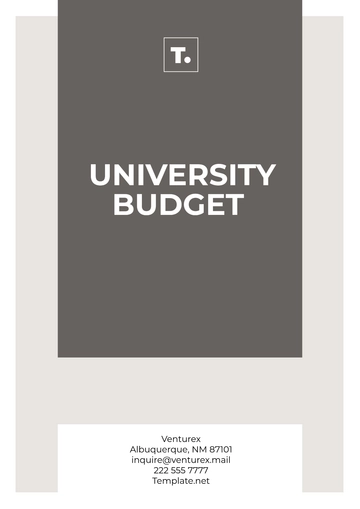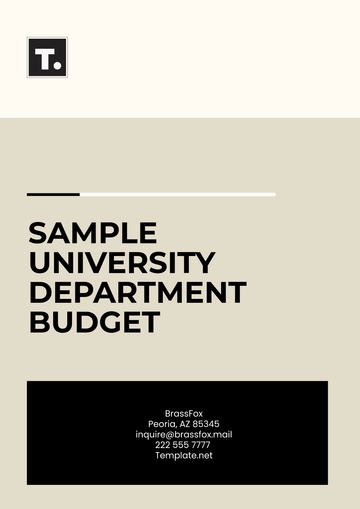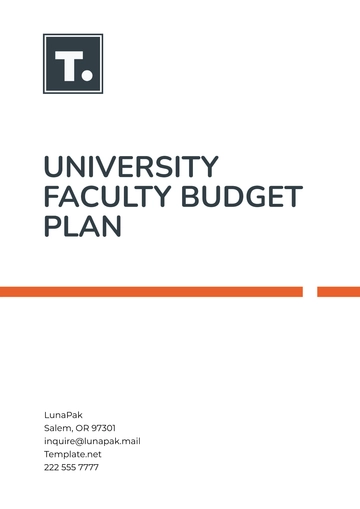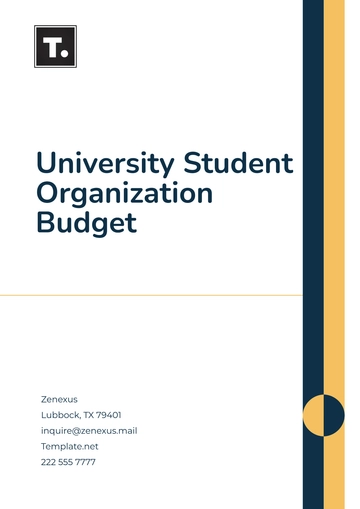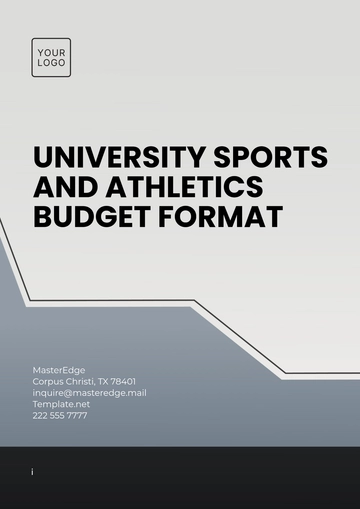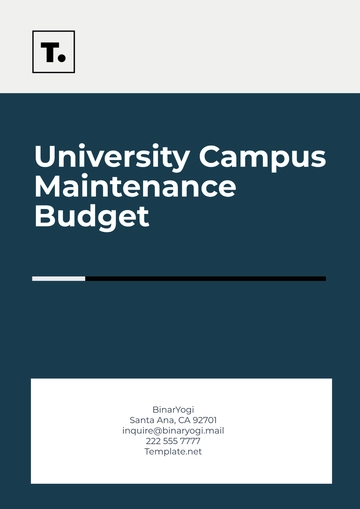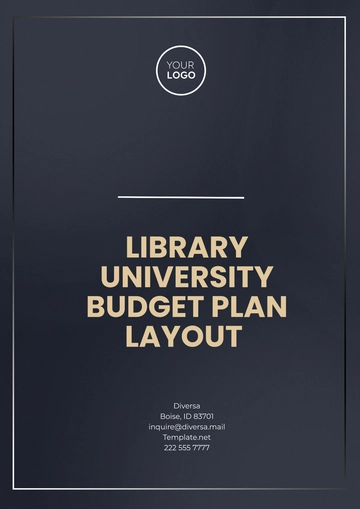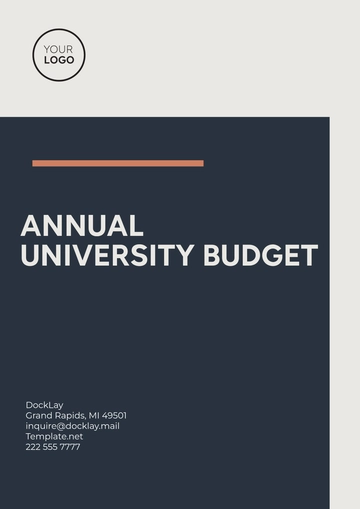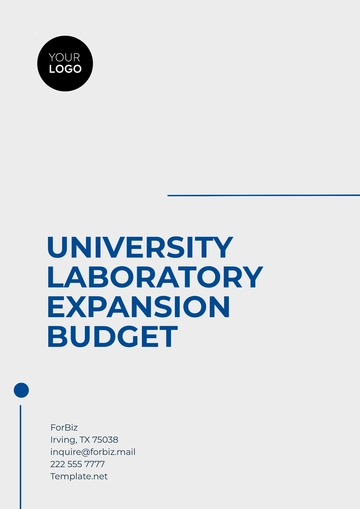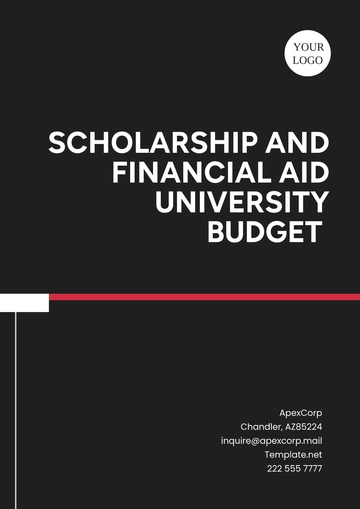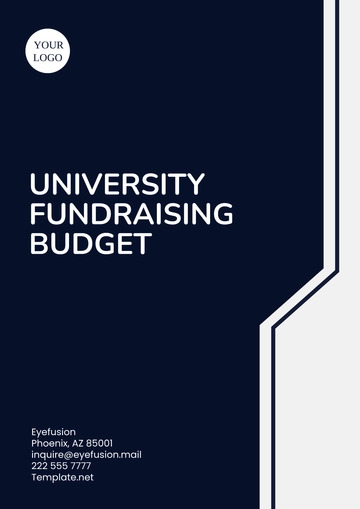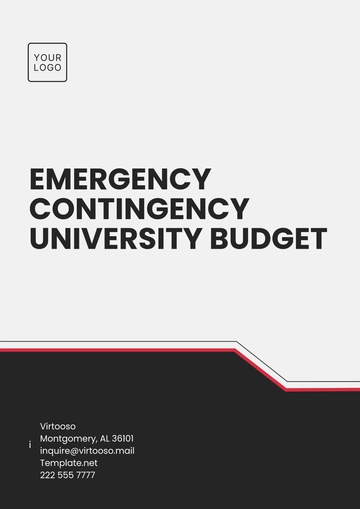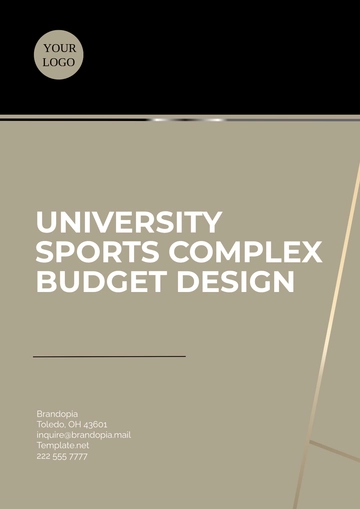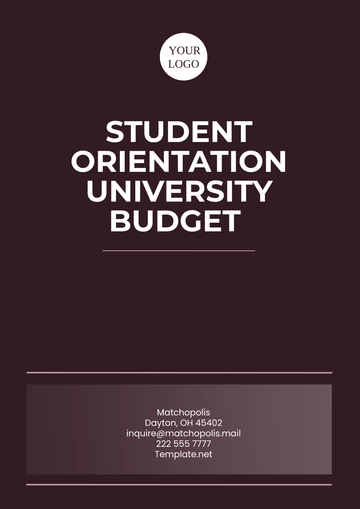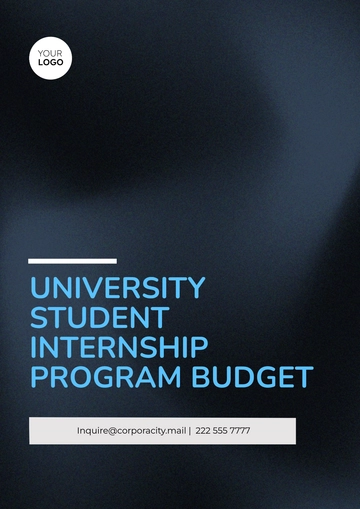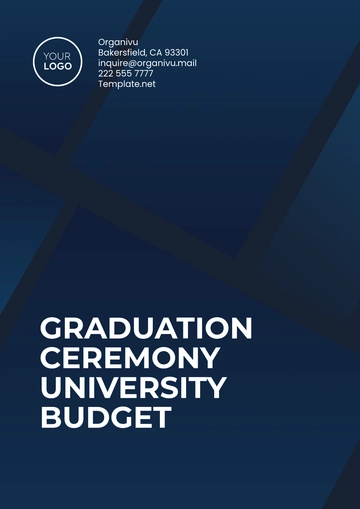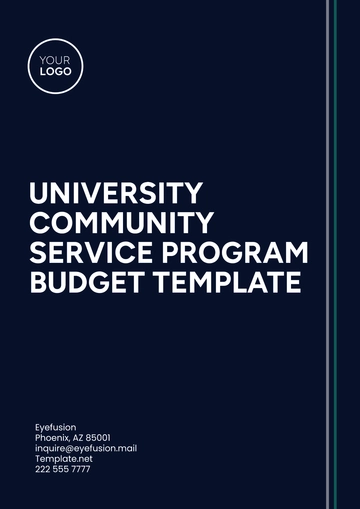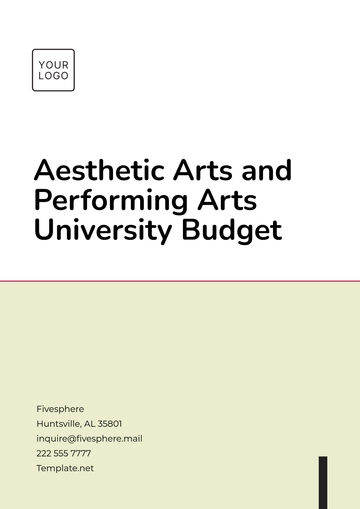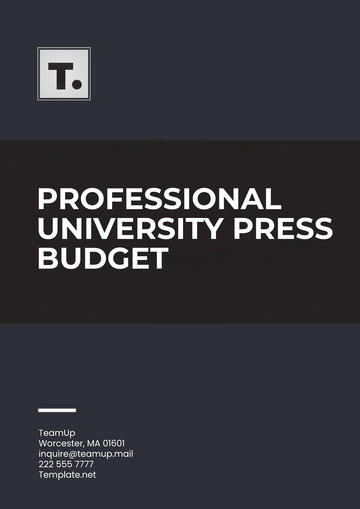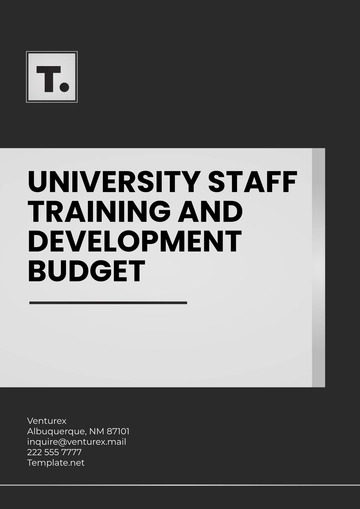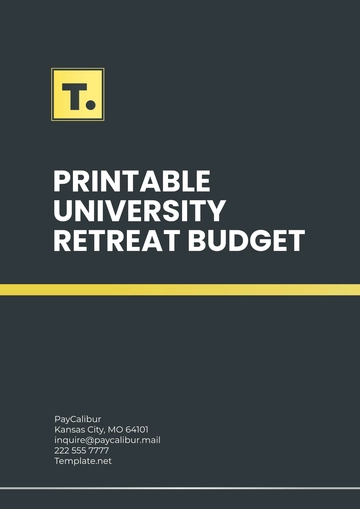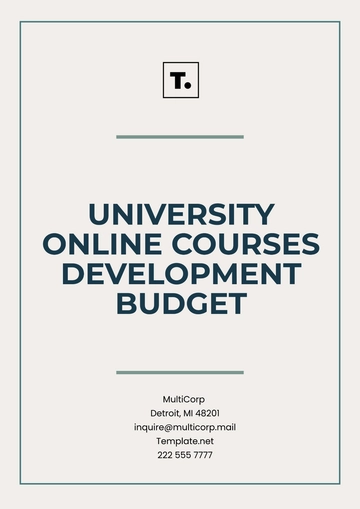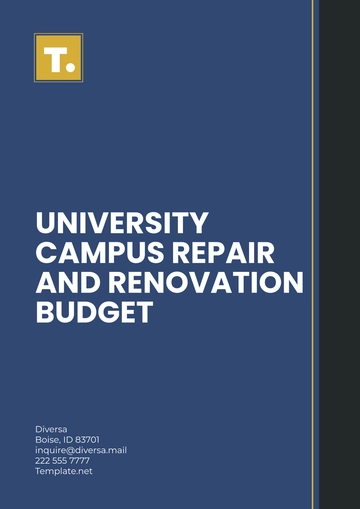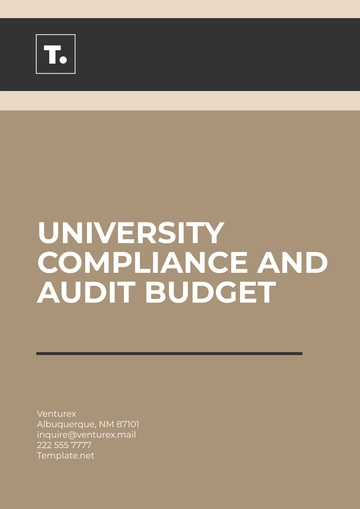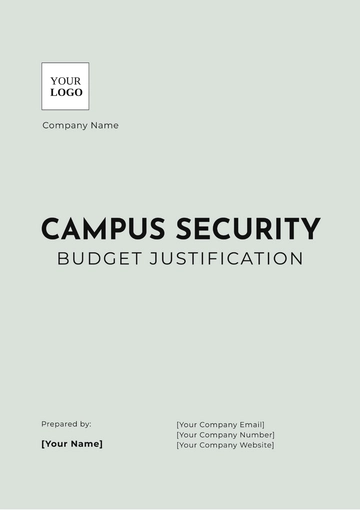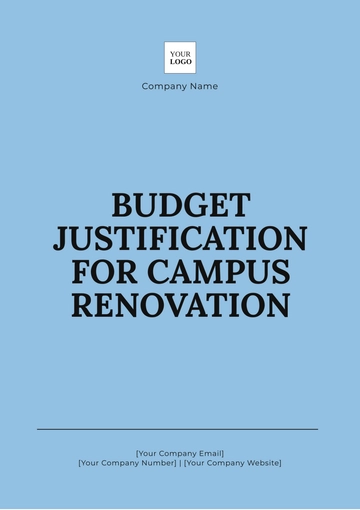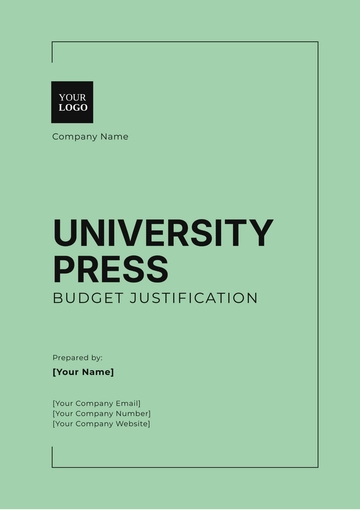Free Budget Justification for Campus Renovation
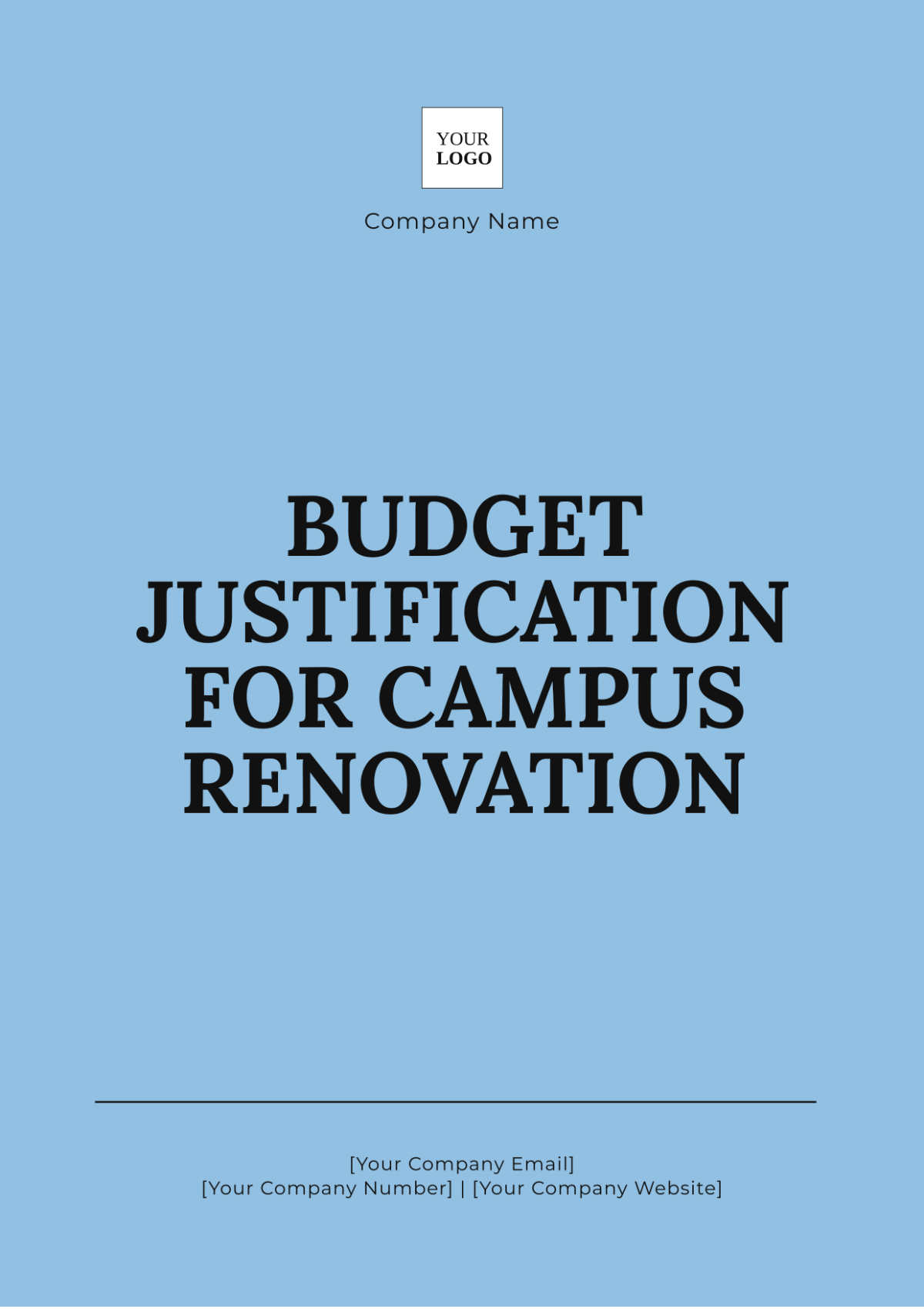
Prepared by: [Your Name]
Date: [Date]
I. Executive Summary
The Campus Renovation Project aims to significantly enhance the educational environment by implementing comprehensive structural improvements and modernization efforts. This document provides a detailed overview of the project's financial requirements, including a thorough justification for costs, the scope of work, a timeline, funding sources, and risk management strategies. By investing in this renovation, the university seeks to create a state-of-the-art facility that supports contemporary teaching and learning methods, fosters a productive academic environment, and meets modern safety and accessibility standards.
II. Detailed Budget Breakdown
Category | Cost |
|---|---|
Construction | $3,000,000 |
Materials | $1,200,000 |
Labor | $1,800,000 |
Consulting Fees | $300,000 |
Contingencies | $500,000 |
Total: | $6,800,000 |
III. Justification for Costs
A. Construction
The construction budget covers:
Demolition of Outdated Structures: Removal of existing buildings and infrastructure that no longer meet functional or safety standards.
Construction of New Facilities: Building new classrooms, laboratories, and administrative offices designed to support modern educational methodologies.
Integration of Sustainable Practices: Adoption of green building technologies to enhance energy efficiency and reduce the environmental impact of the renovation.
These investments are crucial for creating an enhanced learning environment that aligns with contemporary educational needs and complies with up-to-date safety and accessibility regulations.
B. Materials
A significant portion of the budget is allocated to high-quality construction materials to ensure the durability and longevity of the new facilities. This includes:
Structural Components: Steel, cement, and glass for building frameworks and facades.
HVAC Systems: Modern heating, ventilation, and air conditioning systems for improved indoor climate control.
Electrical and Plumbing Components: Essential systems for power, water, and waste management, ensuring operational efficiency and reliability.
C. Labor
Labor costs encompass:
Manual Labor: Workforce required for demolition, construction, and installation tasks.
Supervisory Staff: Oversight and management of construction processes to ensure adherence to plans and quality standards.
Specialized Technicians: Experts needed for the installation of complex systems, including HVAC, electrical, and plumbing.
D. Consulting Fees
Allocated for:
Architectural and Engineering Consultations: Expertise in designing functional, aesthetic, and structurally sound facilities that meet project requirements and regulatory standards.
E. Contingencies
A contingency fund is established to address:
Unexpected Expenses: Any unforeseen costs that arise during the renovation process, ensuring the project remains on schedule and within budget.
IV. Scope of Work
The scope of the Campus Renovation Project includes:
Demolition and Removal: Tearing down outdated structures and preparing the site for new construction.
New Construction: Erecting modern classrooms, laboratories, and administrative offices tailored to current and future educational needs.
Upgrades to Systems: Overhauling HVAC, electrical, and plumbing systems to meet contemporary standards of efficiency and safety.
Landscaping and Exterior Improvements: Enhancing the campus environment with improved landscaping and exterior features.
Accessibility Improvements: Ensuring full compliance with the Americans with Disabilities Act (ADA) and incorporating features that facilitate accessibility for all users.
Sustainable Practices: Implementing eco-friendly building techniques and materials to promote environmental sustainability.
V. Timeline
Phase | Duration |
|---|---|
Planning | 6 months |
Demolition | 3 months |
Construction | 12 months |
Final Inspection and Handover | 1 month |
Total: | 22 months |
The project is planned to span 22 months, from initial planning through to final inspection and handover, ensuring thorough and timely execution.
VI. Funding Sources
The renovation will be financed through a combination of:
University Budget Allocation: Internal funds are allocated from the university’s budget.
State Government Grants: Financial support provided by state agencies to support educational infrastructure.
Private Donations and Endowments: Contributions from alumni, philanthropists, and other private donors.
Loans and Bond Issues: Borrowed funds or bonds issued to cover any remaining financial needs.
VII. Risk Management
Effective risk management strategies include:
Regular Monitoring and Reporting: Ongoing oversight of project progress and financial status to identify and address issues promptly.
Emergency Contingency Plans: Preparedness for unexpected challenges or delays, ensuring continuity and minimal disruption.
Insurance Coverage: Protection for property and labor against potential risks and liabilities.
Compliance with Standards: Adherence to safety, regulatory, and building codes to mitigate risks and ensure project integrity.
VIII. Appendices
Supplementary documents available upon request include:
Architectural Drawings: Detailed plans and designs of the proposed renovations.
Engineering Reports: Technical evaluations and specifications related to construction.
Permit Applications: Required permits and approvals for the renovation project.
This comprehensive budget justification provides a clear and detailed financial plan for the Campus Renovation Project, ensuring transparency and accountability while addressing the university’s infrastructural needs.
- 100% Customizable, free editor
- Access 1 Million+ Templates, photo’s & graphics
- Download or share as a template
- Click and replace photos, graphics, text, backgrounds
- Resize, crop, AI write & more
- Access advanced editor
Template.net's Budget Justification for Campus Renovation Template is the ideal tool for outlining the financial requirements of campus improvement projects. This editable and customizable template helps you present renovation costs and anticipated benefits. Editable in our AI Editor Tool, it offers a flexible format for customization. Ensure a thorough and professional budget justification to secure necessary funding for your campus upgrades.
You may also like
- Budget Sheet
- Personal Budget
- Non Profit Budget
- Monthly Budget
- Project Budget
- HR Budget
- Company Budget
- Home Budget
- Weekly Budget
- College Budget
- Business Budget
- Construction Budget
- Small Business Budget
- Hotel Budget
- Annual Budget
- Home Renovation Budget
- Household Budget
- Student Budget
- Grocery Budget
- Marketing Budget
- Corporate Budget
- Startup Budget
- Manufacturing Budget
- Church Budget
- University Budget
- Annual Budget Plan
- Event Budget
- Operating Budget
- Travel Budget
- Food Budget
- IT and Software Budget
- School Budget
- Real Estate Budget
- Sales Budget
- Conference Budget
- Budget Finance
- Freelancer Budget
- Budget Advertising
